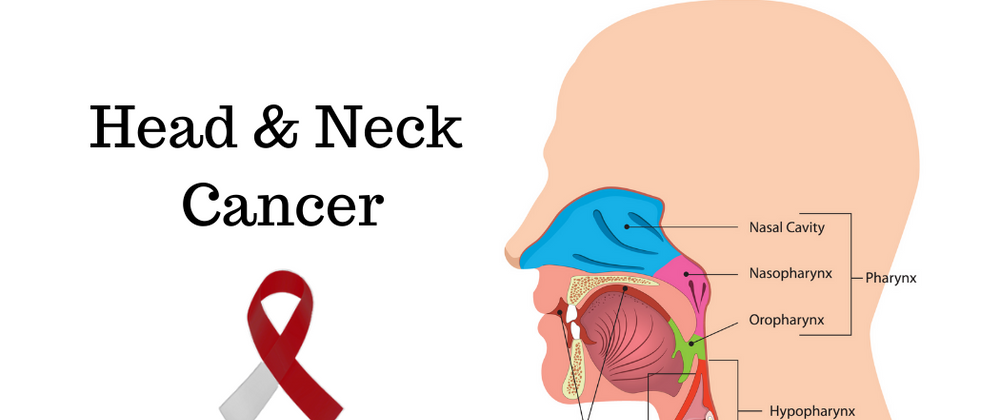Understanding Head and Neck Cancer
Head and neck cancer refers to a group of cancers that develop in the mouth, throat, voice box (larynx), nose, and sinuses. While not as commonly discussed as lung or breast cancer, head and neck cancers account for nearly 4% of all cancers in the U.S..
Many cases are curable when caught early, but because symptoms can mimic common illnesses, they often go unnoticed. Knowing the signs, risk factors, and when to seek medical attention can be life-saving.
Types of Head and Neck Cancer
Head and neck cancers are classified based on where they develop:
Oral Cancer (Mouth Cancer)
- Forms in the tongue, lips, cheeks, gums, and roof or floor of the mouth.
-
Early signs include persistent mouth sores, red or white patches, and difficulty chewing.
Throat Cancer (Pharyngeal Cancer)
Affects the pharynx (throat), which includes the tonsils and soft palate.
-
Symptoms often involve difficulty swallowing and persistent sore throat.
Laryngeal Cancer (Voice Box Cancer)
Develops in the larynx (voice box), which contains the vocal cords.
Common in smokers and leads to hoarseness or voice changes.
Nasal and Sinus Cancer
-
Starts in the sinuses or nasal cavity and may cause chronic congestion or nosebleeds.
Salivary Gland Cancer
Occurs in the glands that produce saliva, often leading to a painless lump under the jaw or near the ear.
Each type of head and neck cancer presents differently, but many share similar early warning signs.
Common Symptoms of Head and Neck Cancer
Early symptoms can be subtle and easily mistaken for minor issues. It’s important to be aware of:
- Persistent sore throat or hoarseness that doesn’t improve
- Difficulty swallowing or the sensation of something stuck in the throat
- Unexplained weight loss
- Ear pain or fullness (especially in one ear)
- A lump or swelling in the neck, throat, or jaw
- Chronic nasal congestion or frequent nosebleeds
- Numbness or tingling in the face or mouth
- Changes in voice or difficulty speaking If these symptoms last more than two weeks, it’s essential to seek an evaluation from an ENT specialist for early detection.
Who Is at Risk for Head and Neck Cancer?
Several factors increase the risk of developing head and neck cancer:
Tobacco and Alcohol Use
- 85% of head and neck cancers are linked to smoking or tobacco use (cigarettes, cigars, pipes, or chewing tobacco).
-
Heavy alcohol consumption increases the risk, especially when combined with smoking.
Human Papillomavirus (HPV) Infection
HPV-related throat cancer is on the rise, particularly among younger adults.
-
Unlike smoking-related cancers, HPV-positive cancers respond well to treatment.
Prolonged Sun Exposure
Increases the risk of lip cancer and skin cancers on the head and neck.
Poor Oral Hygiene and Nutrition
-
Poor dental care and lack of fresh fruits and vegetables can increase risk.
Workplace Chemical Exposure
-
Frequent exposure to wood dust, asbestos, and industrial fumes increases the risk of nasal and sinus cancers.
Weakened Immune System
People with immune system disorders or those who have undergone organ transplants may be more susceptible.
Treatment Options for Head and Neck Cancer
Treatment depends on the type, location, and stage of cancer, but common options include:
Surgery
- Removes the tumor and, in some cases, affected lymph nodes.
- Neck surgeries may be necessary for larger cancers.
- Radiation Therapy
- Uses high-energy beams to destroy cancer cells.
- Often used in early-stage cancers or alongside other treatments.
Chemotherapy
- Drug-based treatment that targets cancer cells throughout the body.
-
Typically used for advanced or aggressive cancers.
Immunotherapy
-
Helps the immune system fight cancer more effectively.
Targeted Therapy
Uses medications to block cancer cell growth without affecting normal cells.
Early-stage cancers often require less aggressive treatment, which is why early diagnosis is key.



Top comments (0)